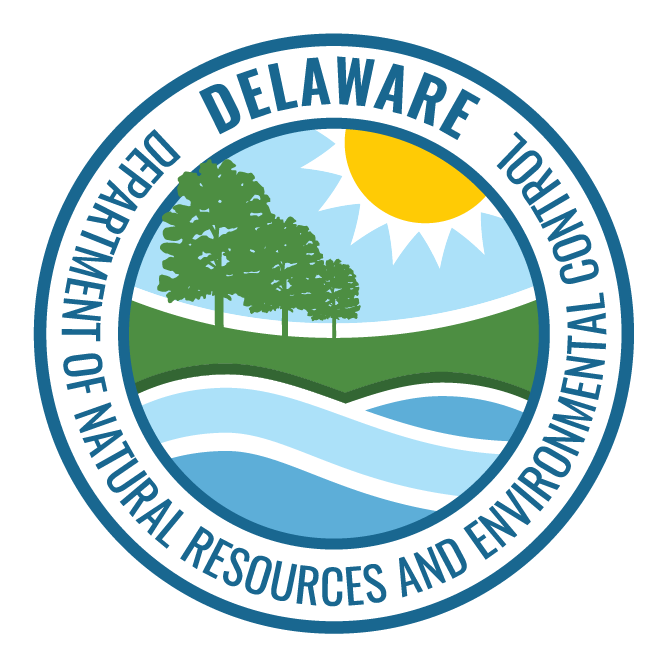Pages Tagged With: "conservation"
For 32 years, volunteers cleared tons of trash from Delaware beaches in single-day events. In 2020, to make the Coastal Cleanup accessible and safe for everyone, the effort transitioned to a month-long campaign.
Delaware’s Materials Recycling Facility is a 64-thousand-square-foot repurposing facility with state-of-the-art sorting equipment.
As anyone who’s searched for them knows, finding snakes, turtles, frogs and other reptiles or amphibians isn’t always easy. For conservationists, who must develop detailed plans around propagating species that are typically rare to begin with, it can be even more difficult. Experts have too often lacked good data about these critters, including where exactly they live. Mapping the range of every species in our state is a very big task. But, thanks to a very extensive project that took the better part of a decade, the Delaware Department of Natural Resources and Environmental Control now has a better idea about the location of reptiles and amphibians here.
Toliara is a radiated tortoise who lives at the Brandywine Zoo. Radiated tortoises are reptiles and considered among the most beautiful in the world. His ancestors emerged on land shortly after dinosaurs became extinct some 65 million years ago.
The American kestrel is a pint-sized yet ferocious aerial predator notorious for taking out tree swallows or bluebirds in mid-air. About the size of a mourning dove, this raptor is the smallest and most colorful falcon in North America. But the species is also in danger. Kestrel populations have been falling, with the Mid-Atlantic region experiencing the greatest decline.
Over 20 years, Delaware has recycled more than two million tons of rock, 100,000 tons of concrete, 86 tanks and armored personnel carriers, 1,329 retired subway cars and 27 retired vessels to create new, artificial reefs.
Our relationship with electric automobiles has run hot and cold over the last 100 years, with gas-powered vehicles always winning in the end. Now people are looking for cleaner alternatives as concerns for the environment increase.
We are mapping sightings of Delmarva fox squirrels and you can help. Use this form to report sightings and share information about this rare species. The Delmarva fox squirrel is no longer classified as an endangered or threatened species at the federal level. But it is still rare
Delaware has more than 1,600 species of native plants. More than a quarter of them are rare and can be found in more than 100 different terrestrial and wetland habitat types.
Related Documents Status Ranking Criteria Rare Plants of Delaware Native Indigenous Trees
Spring brings the shorebird migration season. DNREC’s Delaware Shorebird Project needs experienced and dedicated volunteers for the field season each spring. To apply, please fill out the Volunteer Information Form. New applicants should include a letter of interest briefly describing their experience and what they hope to gain by volunteering.
The DNREC Division of Fish and Wildlife uses a combination of federal funds and revenue from recreational licenses and permits to fund wildlife conservation, habitat restoration, public access, hunting, fishing and other services. Delaware receives federal funds from the Wildlife Restoration Act, the Sport Fish Restoration Act, and
The Delaware Bay is extraordinarily rich in biological resources. The beaches, mudflats, and marshes that line Delaware Bay provide abundant food and habitat for many species. The Delaware Bay Supports a variety of species. As many as 30 species of shorebirds visit the Delaware Bay in May. The majority are
Dwindling populations have landed the Piping Plovers on the federal Endangered Species List. DNREC’s Beach-Nesting Bird Program monitors these beach-nesting birds, provides habitat protection and educates the beach-going public. Piping plovers are small sand-colored shorebirds that nest and feed on the beach. They begin arriving and nesting on
Each May, DNREC’s Delaware Shorebird Project carries out its research objectives during the shorebirds’ stopover in the Bay. The brief field season brings long, but rewarding, days on the coast. A Tradition of Research and Partnership Each year, flocks of shorebirds are carefully counted and individually marked
Delaware’s osprey population is one of the state’s greatest conservation success stories. From the days of DDT and the collapse of many raptor populations, including bald eagles and peregrine falcons, osprey in Delaware have rebounded and the population continues to grow state-wide.
Shorebirds are an important part of the ecology of Delaware’s shorelines. But they are under threat; populations are declining. DNREC’s Delaware Shorebird Project works to mitigate that threat, through research and monitoring, habitat protection, and management planning. The Shorebird Project team has conducted research and monitoring since 1997. They have
The Division of Fish and Wildlife offers a phragmites control cost-share program to help landowners control larger stands of phragmites. There are steps landowners can take themselves to control smaller areas of phragmites. Herbicides That Can be Used
Sources for Aquatic Glyphosate Keystone Pest Solutions 877-835-8321 Shoreline
A list of frequently asked questions, and answers, about the phragmites control cost-share program offered by the Division of Fish and Wildlife.
Contact Us
James Joachimowski Impoundment/Habitat Biologist 302-725-3638
[button type=”primary”
Operation Terrapin Rescue is a volunteer program to help Diamondback terrapins move safely between the Delaware Bay and their nesting sites near Port Mahon. It also collects accurate and valuable data on the terrapins’ movements.
Nate Nazdrowicz Species Conservation and Research
The Species Conservation and Research Program (SCRP) continuously updates information on rare plant and animal species and vegetation communities in Delaware. The SCRP is the state’s most comprehensive, centralized source of information on rare plants, animals, and vegetation communities.
Environmental
The DNREC Division of Fish and Wildlife is implementing a conservation plan for the Delmarva fox squirrel. This sub-species of the fox squirrel, found only on the Delmarva Peninsula, is rare in Delaware. As part of the conservation plan, DNREC has begun a project to move squirrels from Maryland into southern Delaware.
Native wildlife species that are in danger of becoming extinct in Delaware may be listed as Endangered by the Division of Fish and Wildlife. To help prevent species from becoming endangered, Delaware currently has a Wildlife Action Plan in place for restoring and maintaining important habitats and dwindling populations of the state’s
Phragmites has been present in Delaware’s marshes for a long time. In fact, research shows that Phragmites (Phragmites australis) has been a part of the wetland ecosystem of North America for over 11,000 years. However, in the 1950s, Phragmites was identified as problematic in North American wetlands as a non-native European hybrid began to wreak
The DNREC Division of Fish and Wildlife manages approximately 68,000 acres of Delaware land at 19 public wildlife areas that provide hunting and wildlife opportunities as well as habitat for a variety of species. The Division implements important wildlife and habitat conservation and education initiatives, like the Natural Heritage and Endangered Species Program and the
Steve Williams, Director 285 Beiser Blvd., Suite 102 Dover, DE 19904 302-739-9921
Watershed Assessment and Management 302-739-9939 Shoreline and Waterway Management 302-608-5500 Conservation Programs 302-608-5458
Drainage Program 21309 Berlin
White-tailed deer are one of the most important wildlife species managed in Delaware. Wildlife-watchers, photographers, and hunters flock to the state in pursuit of deer. They contribute millions of dollars each year to the state’s economy.
Sam Millman Deer Biologist 302-735-3600
Chronic Wasting Disease (CWD) is a disease of the brain and nervous system in members of the family Cervidae (deer, elk, or moose). It has not been found in Delaware but has in 26 other states and four Canadian provinces. State wildlife officials are taking steps to avoid its spread into Delaware.
Since 1974, the DNREC Division of Fish and Wildlife has conducted annual waterfowl surveys to measure long-term trends in duck and goose populations. The survey results help increase biologists’ knowledge about the state’s waterfowl populations and habitat and help the state make informed decisions about habitat management and hunting. [column md=”5″ xclass=”col-xs-12
While Delaware’s coyote population remains relatively low, coyotes have been documented in each of the state’s three counties. Coyotes (Canis latrans) have been expanding across the continental United States since the mid-1900s and are now found in 49 of the 50 states, with only Hawaii not having a coyote population. Delaware is recognized as the
Bats are one of the most mysterious and least understood groups of mammals. Discover the bats of Delaware; the species we have, how to attract or safely evict them, get information about White-Nose Syndrome, find out what the state is doing for bats, and how you can help. [column md=”6″ xclass=”col-xs-12 col-lg-5
The St. Jones Reserve component of the Delaware National Estuarine Research Reserve (DNERR) is located on the north shore of the St. Jones River, off Kitts Hummock Road, south of Dover in Kent County and includes a portion of Delaware Bay. The St. Jones Reserve is on the Delaware Bayshore Byway and includes a Visitor
The Blackbird Creek Reserve component of the Delaware National Estuarine Research Reserve (DNERR) is located upstream from Delaware Route 9 at Taylors Bridge in Townsend, New Castle County. The Blackbird Creek Reserve is on the Delaware Bayshore Byway and includes trails, pavilion and canoe/kayak launch.
You can get involved in your community and your estuary when you volunteer with DNREC’s Delaware National Estuarine Research Reserve (DNERR). The Reserve offers a variety of volunteer opportunities for adults and high school students throughout each year at each of its two locations. The Delaware National Estuarine
The Delaware National Estuarine Research Reserve actively promotes installation of conservation and restoration projects. As part of an educational outreach effort, 12 acres of poorly-drained farmland located within the St. Jones Reserve were converted in 2003 to demonstration plots to highlight wetland and grass conservation options.
[panel
Delaware Coastal Programs works with partners at the state, regional and national level to promote better stewardship of coastal habitats. Stewardship involves a wide range of activities including land acquisition, habitat mapping, ecological restoration, invasive species monitoring, resource inventories, demonstration areas, and more.
The Delaware National Estuarine Research Reserve (DNERR) is one of 30 National Estuarine Research Reserves across the country whose goal is to establish, protect, and manage natural estuarine habitats for research, education, and coastal stewardship. DNREC manages the Reserve under a regularly updated, five-year Reserve Management Plan.
DNREC’s Conservation Access Pass provides needed funding to help the DNREC Division of Fish and Wildlife maintain and improve public access, facilities, and wildlife habitat on State Wildlife Areas.
[modal text=”Where Can You Get Yours?” title=”Get your Pass online or in person” xclass=”btn btn-primary
The Coastal Programs Section of the Division of Climate, Coastal and Energy serves as the Department’s research, education, and policy lead for coastal and ocean issues. It helps manage Delaware’s federal coastal zone and balance the use and protection of its resources through the integrated efforts of the Delaware Coastal Management Program and Delaware National Estuarine Research
The DNREC Division of Climate, Coastal and Energy supports energy efficiency and conservation programs that help reduce energy use and its impact on the state’s environment and public health. Every investment in energy efficiency helps increase productivity and profits for business, reduces the production of harmful greenhouse gasses, lowers energy costs, and improves the value






